| |
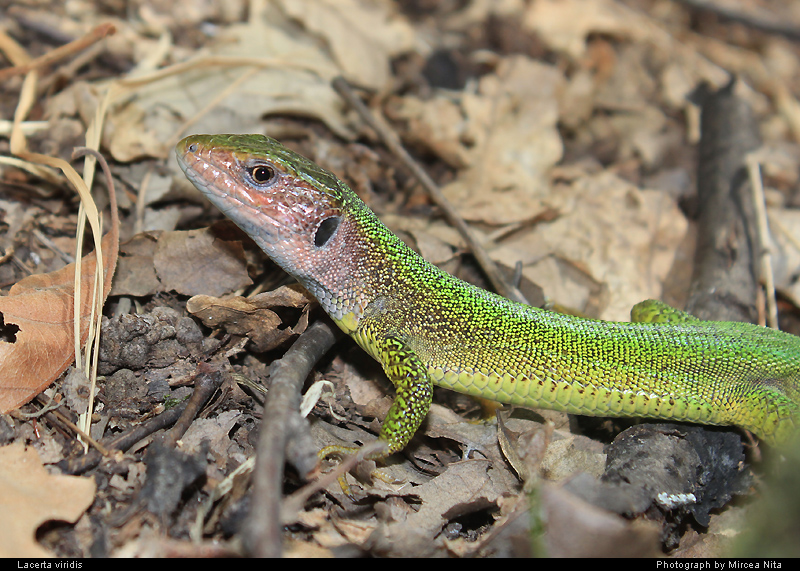
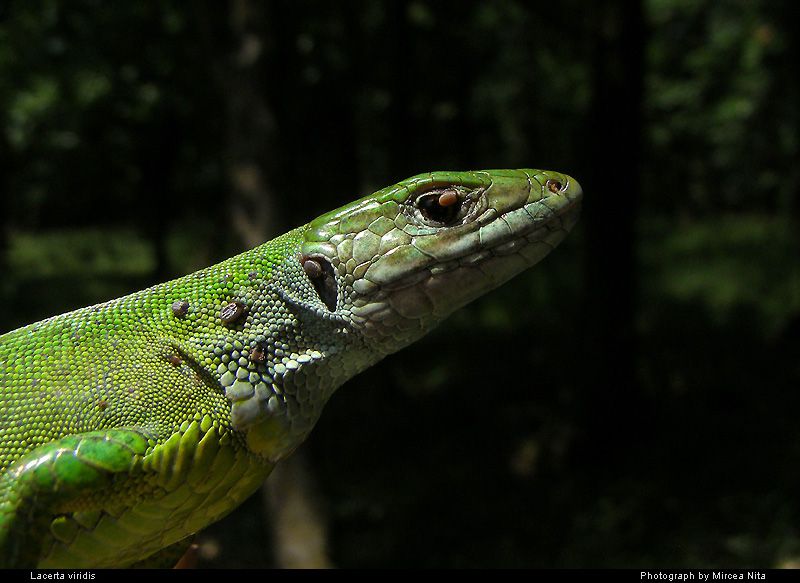
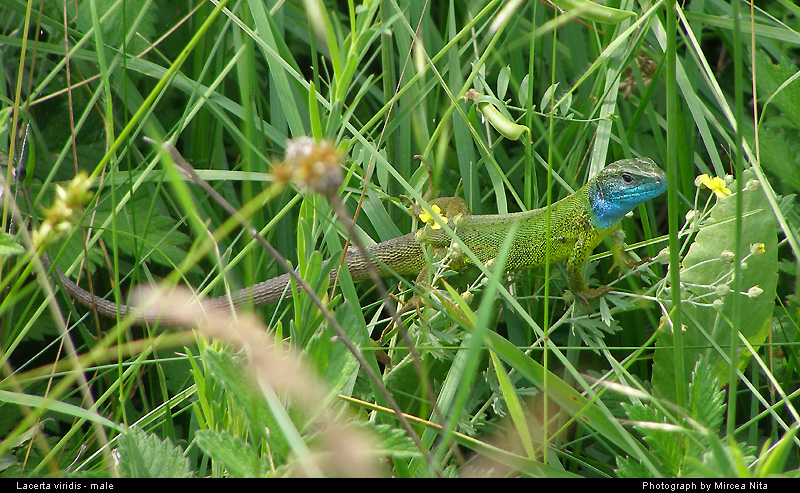

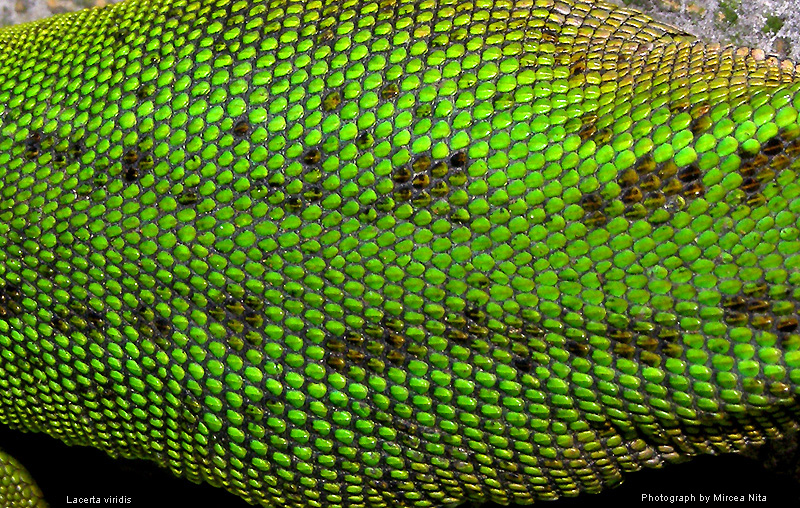
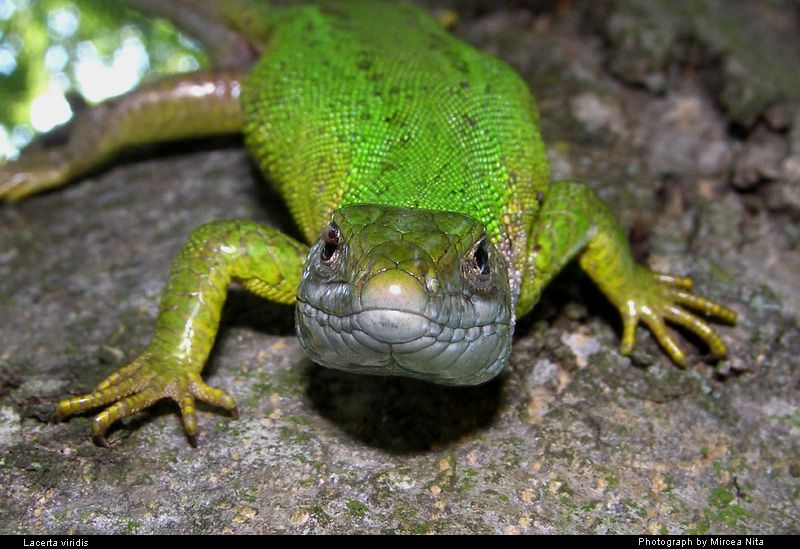
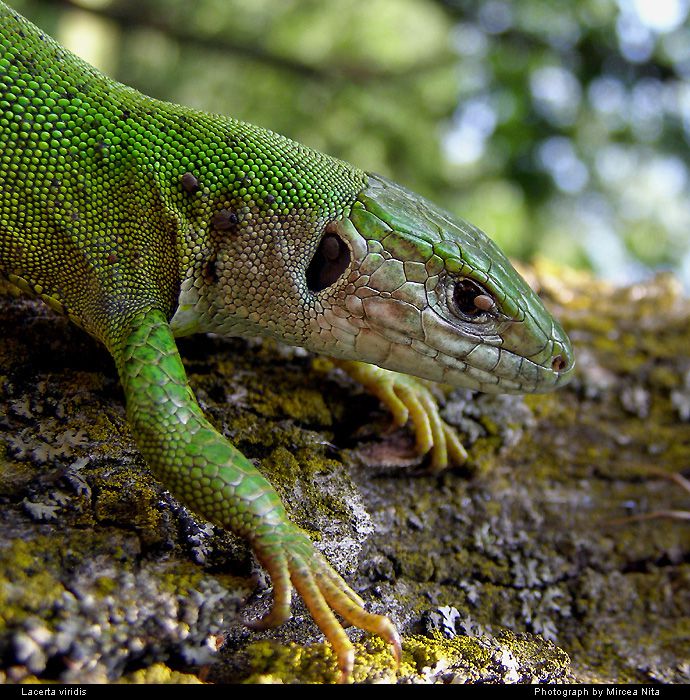
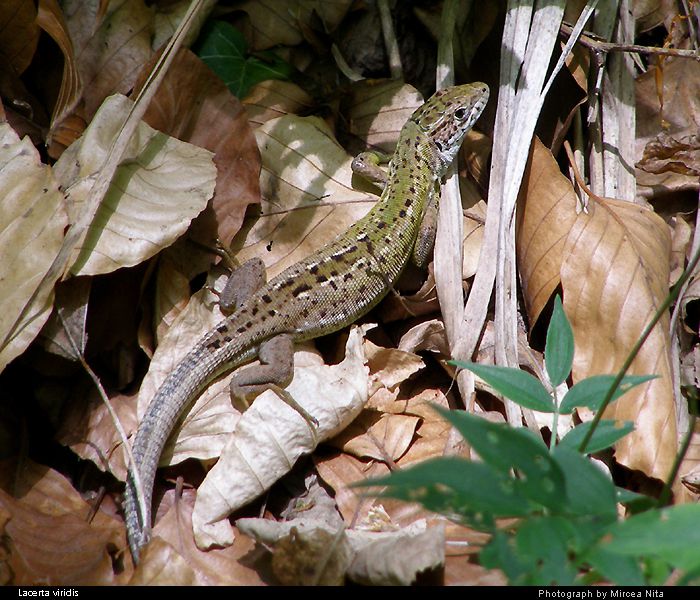
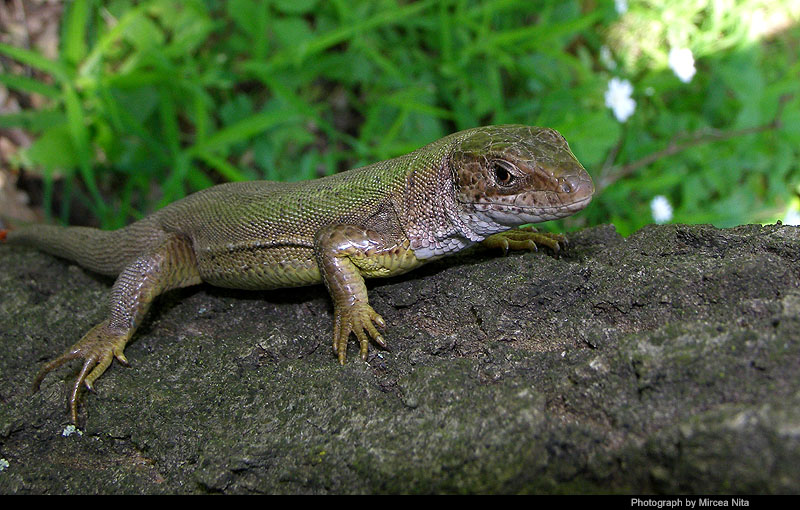
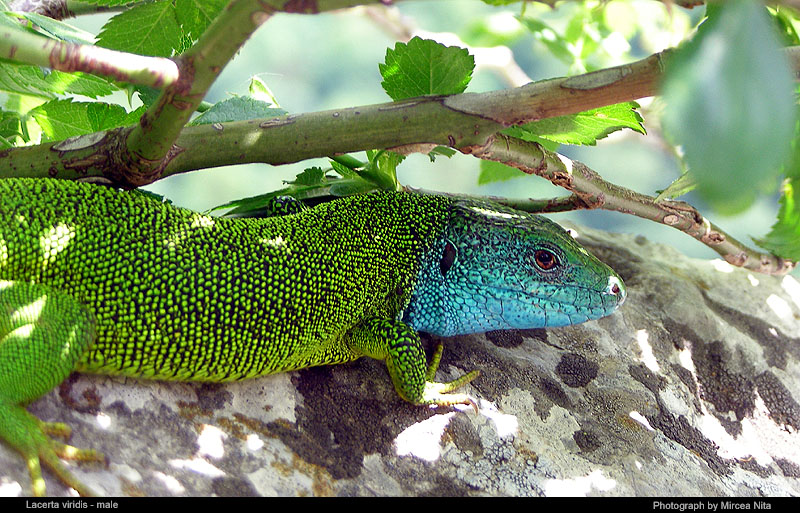
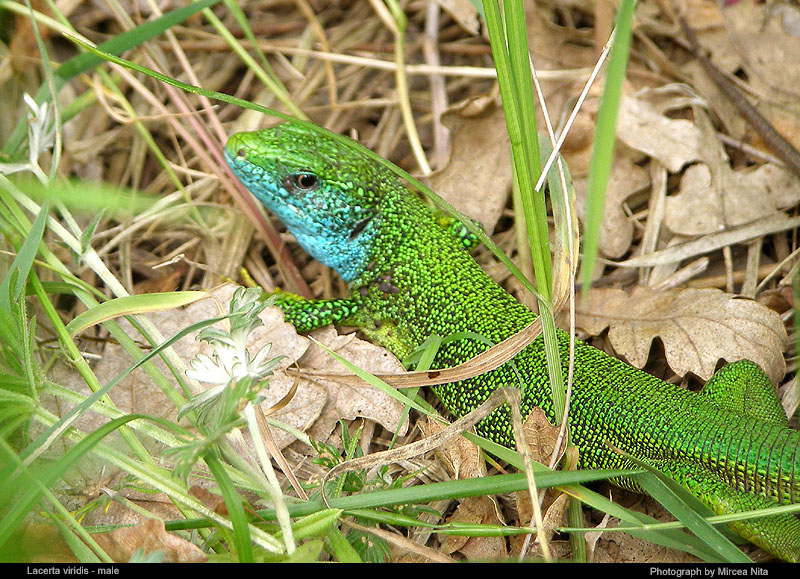
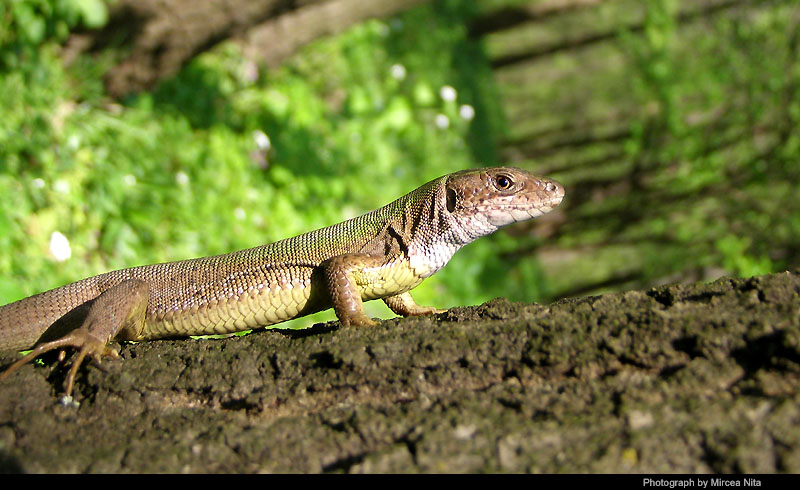
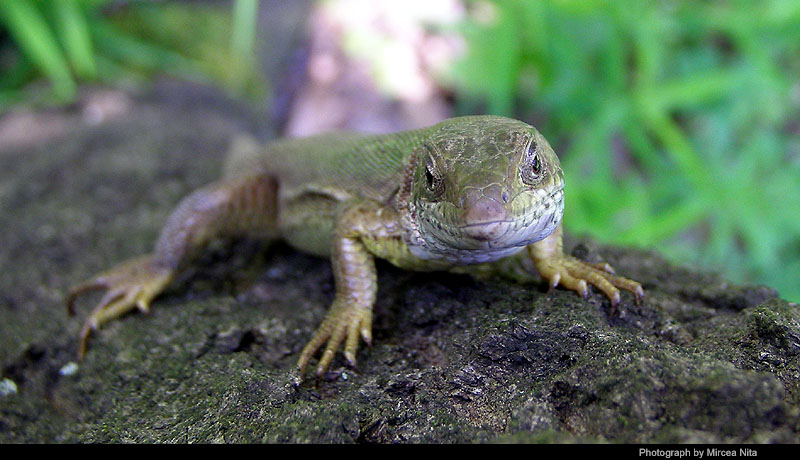
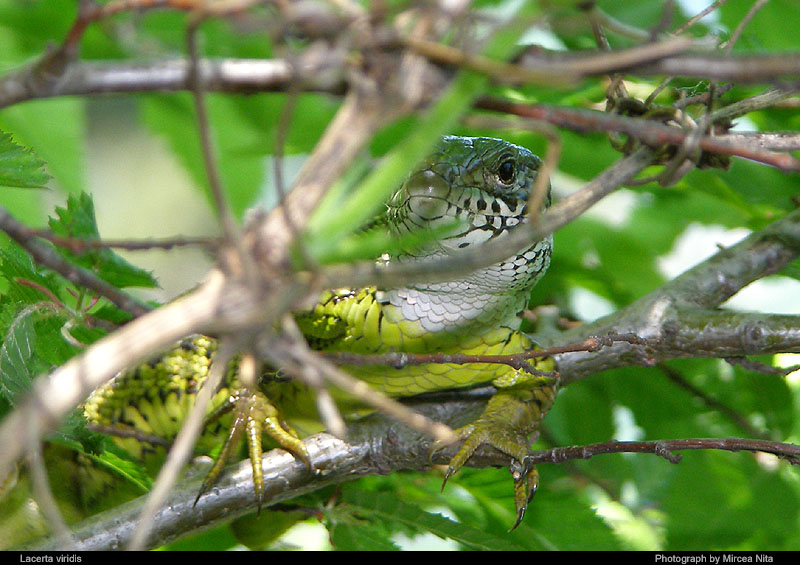
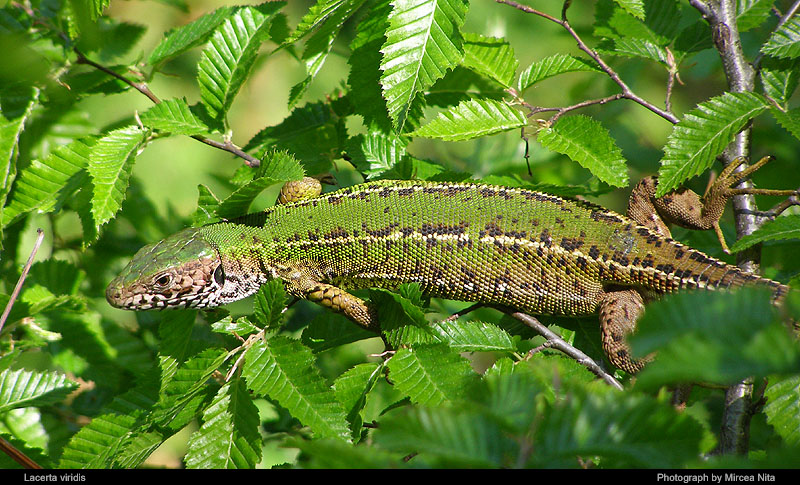
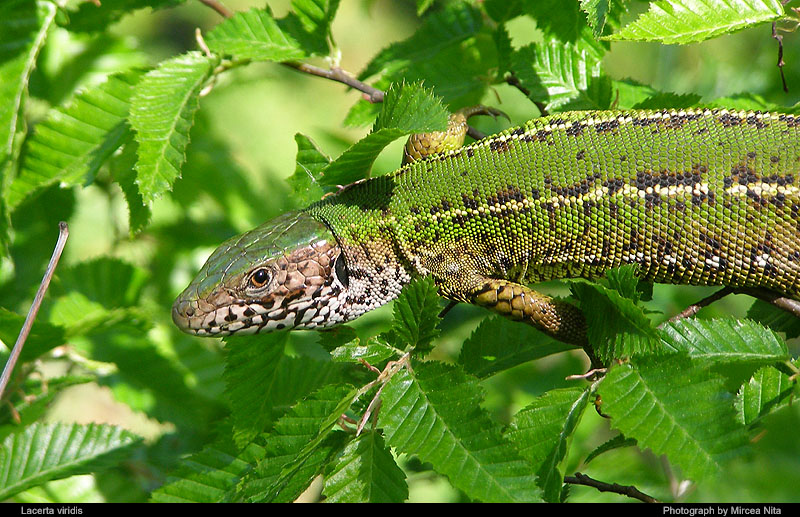
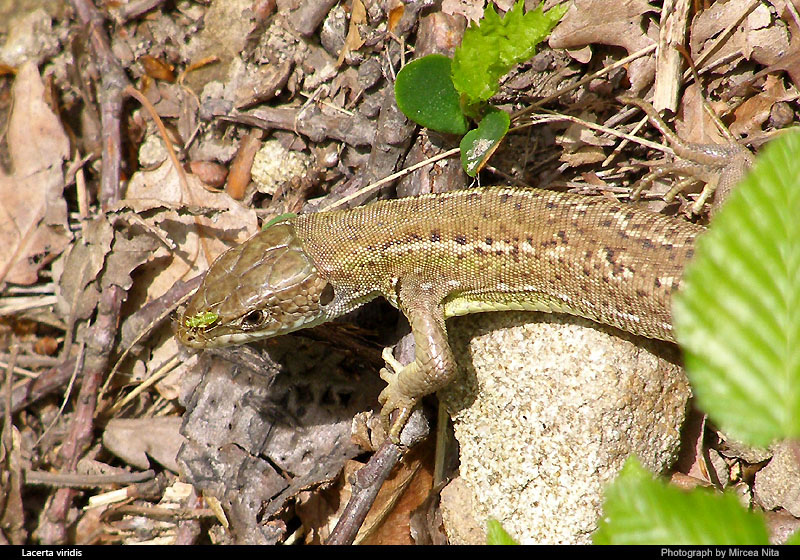
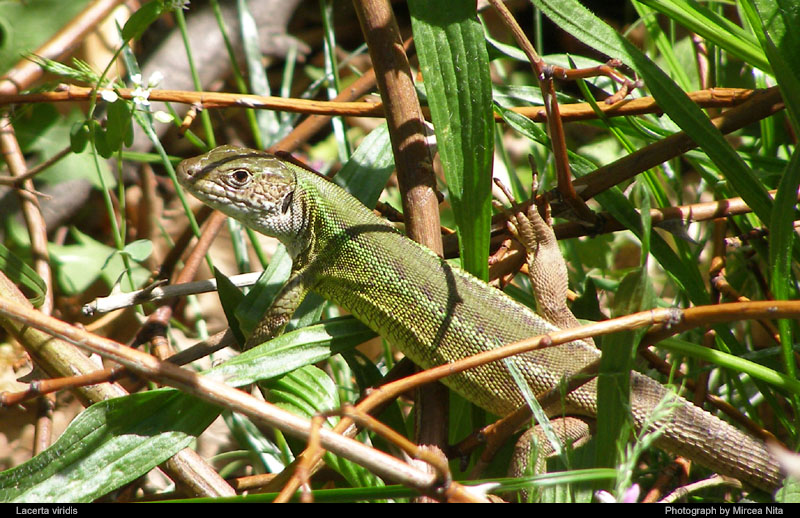
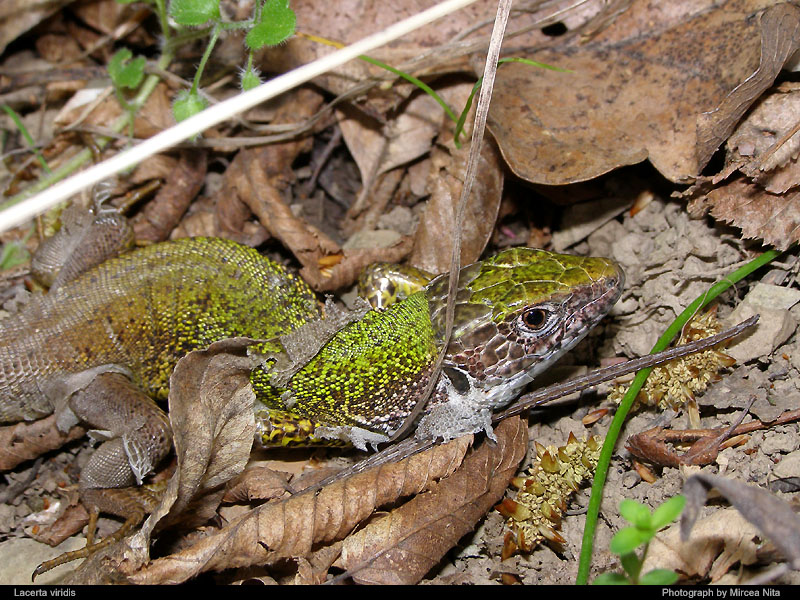
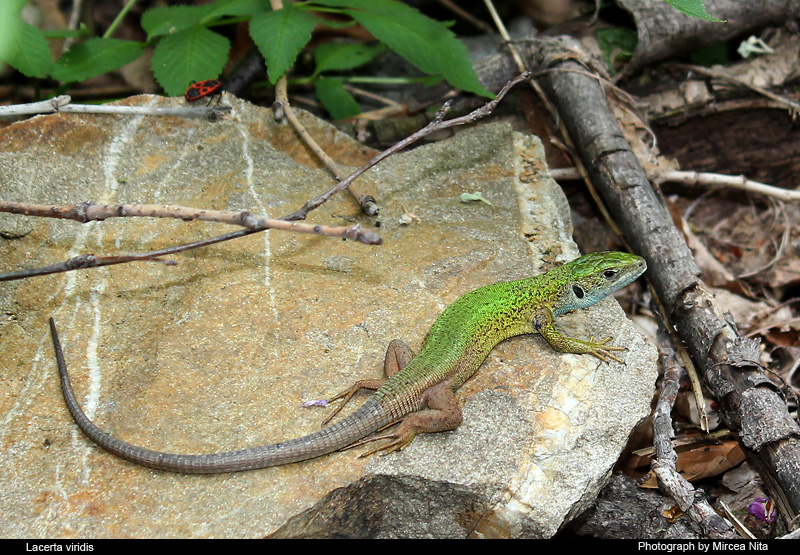
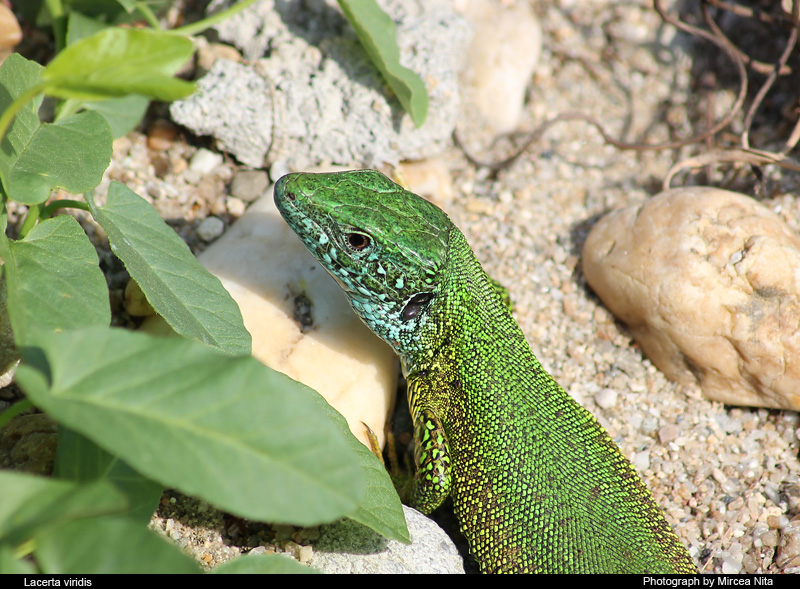

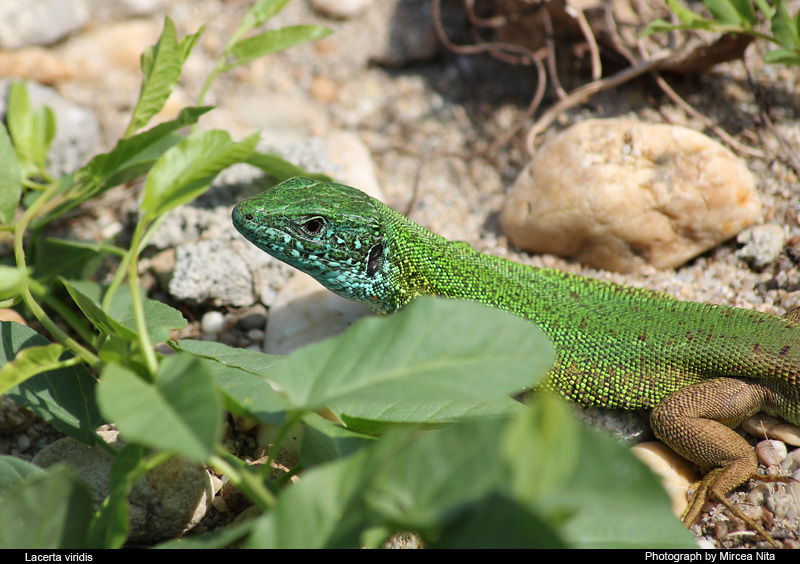

Lacerta viridis
Eastern green lizard - Laurenti, 1768
Until recently (1991) the European green lizards were regarded as a single species (with two sub-species L.v. viridis and L.v. bilineata). The recent tendency is to treat Lacerta viridis (eastern green lizard) and L. bilineata (western green lizard) as separate species due to genetic data, but the currently accepted taxonomy requires further research (Crochet and Dubois, 2004).
Description:
Total length is 25 to 35 cm (up to 42 cm) the tail measuring 2/3 of the total length, so, Lacerta viridis is a “giant” among the lizards of the family Lacertidae. Usually, the male exceeds the female (which is more slender) a few inches in length.
Dorsally the scales number around the mid-body is between 40 and 56; the plates of the belly are arranged in 6 rows; large femoral pores; rostral plate typically does not in contact with nostrils; anal plate is bordered by two (rarely one) rows of small scales.
The body of the males is almost uniformly green punctuated with small black spots that are more pronounced upon its back. Females are more variable in color: sometimes uniformly green or brown or with blotches. They often have two or four narrow light stripes on their body, which may be bordered with dark lines or spots.
The belly is yellowish in both sexes. The throat is blue in mature males (especially along the sides of the head and the chin) and beige in females (rarely pale blue in some adult females). Juveniles are usually beige or brown, uniform or with a few light spots on sides or with two or four narrow light lines.
Biology:
Around mid March the eastern green lizard emerges from hibernation. Females usually appear in 2 weeks after males. Mating takes places between April and mid June. The males chase each other through the vegetation and may even fight vigorously. In late spring or summer the females lay 1 or 2 clutches of 5 to 23 eggs, not too deep into lose sand or clay soil. The young hatch after 7 to 15 weeks later (depending upon the weather conditions) having a length of 3 - 4 cm. They will become sexually mature in its second or third year (Fitch 1970).
Their diet consists mainly in invertebrates like beetles, locusts, caterpillars, woodlice, spiders, worms and snails, but also newborn lizards and small mice and fruits (blackberries, strawberries). It usually hunts in dense vegetation, and can climb well. It has a lot of enemies like martens, weasels, snakes, cats, birds of prey.
A typical feature of lizards displayed by them is the dropping of the tail when captured in order to escape predators, the tail growing up again.
The Green Lizard is a diurnal species, often being discovered basking in the mornings and evenings. Usually it shelters itself amongst bushes and rock crevices.
Habitat:
The green lizard is found in dense vegetation such as woodland and field edges with good sun exposure, within open woodlands, forested areas and shrubland, hedgerows, and in overgrown areas and cultivated land including orchards. It can be found up to 2200 m above sea level.
It is seen often basking in the sun on rocks or lawns, or sheltering amongst bushes.
Distribution:
Range (on countries): extreme north-east Italy, eastern Germany, the Czech Republic, Slovakia, Hungary, eastern Austria, and Slovenia, Romania, Moldova and southern Ukraine, Croatia (including some Adriatic islands), Bosnia-Herzegovina, Serbia, Montenegro, Macedonia, Albania and Greece (including some Aegean islands, and excluding the Peloponnese), Turkey (where it is largely distributed in the area of Marmara Sea and along the Black Sea coastal region). The species is extinct in Poland and it has been introduced to Kansas in the United States.
Scientific name: Lacerta viridis
Common name: eastern green lizard
Taxonomy:
Species: Lacerta viridis
Subspecies: Lacerta viridis viridis (Laurenti 1768)
Lacerta viridis meridionalis (Cyrén, 1933)
Lacerta viridis infrapunctata (Schmidtler, 1986)
Lacerta viridis guentherpetersi (Rykena, Nettmann & Mayer, 2001),
Lacerta viridis paphlagonica (Schmidtler, 1986)
IUCN Status: LC (Least Concern)
"Lacerta viridis is listed as Least Concern in view of its wide distribution, tolerance of a broad range of habitats, presumed large population, and because it is unlikely to be declining fast enough to qualify for listing in a more threatened category.
This species is listed on Appendix II of the Bern Convention, and on Annex IV of the European Union Habitats Directive. It has been recorded from many protected areas.
In Germany, this species is listed on the national red data list as Critically Endangered.
It is locally threatened in parts of its range, especially in the north, by general habitat loss, afforestation of suitable sites and predation by cats."
References:
Arnold, E.N. 2003. Reptiles and amphibians of Europe. Princeton University Press., Princeton and Oxford;
Arnold, E. N., Arribas, O. and Carranza, S. 2007. Systematics of the Palaearctic and Oriental lizard tribe Lacertini (Squamata: Lacertidae: Lacertinae), with descriptions of eight new genera. Zootaxa 1430: 1-86.
Boulenger, G.A. 1917. Descriptions of new lizards of the family Lacertidae. Ann. Mag. nat. Hist. (8) 19: 277-279;
Böhme, M.U. & Schneeweiss, N. & Fritz, U. & Schlegel, M. & Berendonk, T.U. (2007) - Small edge populations at risk: genetic diversity of the green lizard ( Lacerta viridis viridis ) in Germany and implications for conservation management. - Conservation Genetics, 8 (3): 555-563;
Clark, R. (1999) - herpetofauna of Thassos, North Aegaen Sea, Greece. - Bitish HerpetoloSical Sociery Bulletin, 66: 14-18;
Covaciu-Marcov S.-D.; Ghira, I.; Cicort-Lucaciu A.-St., Sas I.; Strugariu, A. & Bogdan H. V. 2006. Contributions to knowledge regarding the geographical distribution of the herpetofauna of Dobrudja, Romania. North-Western Journal of Zoology 2 (2): 88-125;
Covaciu-Marcov, S.D., Cicort-Lucaciu, A.S., Dobre, F., Feren?i, S., Birceanu, M., Mihu?, R. & Str 2009. The herpetofauna of the Jiului Gorge National Park, Romania. North-Western Journal of Zoology 5 (Suppl. 1): 1-78;
Council of Europe. 2003. Convention on the Conservation of European Wildlife and Natural Habitats. Group of experts on the conservation of Amphibians and Reptiles. Mälmo (Sweden), 26-27 September 2003. Report T-PVS (2003) 18;
Fuhn, I. & S. Vancea, 1961: Fauna Republicii Române, 14. Reptilia (Testoase, Sopârle, Serpi). Bucuresti;
Gasc, J.-P., A. Cabela, J. Crnobrnja-Isailovic, D. Dolmen, K. Grossenbacher, P. Haffner, J. Lescure, H. Martens, J.P. Martinez-Rica, H. Maurin, M.E. Oliveira, T.S. Sofianidou, M. Veith & A. Zuiderwijk, 1997: Atlas of Amphibians and Reptiles in Europe. – Societas Europaea Herpetologica und Muséum National d’Historie Naturelle (IEGB/SPN), Paris;
Joger, U.; Fritz, U.; Guicking, D.; Kalyabina-Hauf, S.; Nagy, Z.T. & Wink, M. 2007. Phylogeography of western Palaearctic reptiles – Spatial and temporal speciation patterns. Zoologischer Anzeiger 246: 293–313;
IUCN 2011. IUCN Red List of Threatened Species. Version 2011.2. ;
Strugariu, A., Zamfirescu, A.R., Nicoar?, A., Gherghel, I., Sas, I., Pu?ca?u, C.M. & Bugeac, T. 2008. Preliminary data regarding the distribution and status of the herpetofauna in Ia?i County (Romania). North-Western Journal of Zoology 4 (Suppl.1): S1-S23;
Szczerbak, N.N. 2003. Guide to the Reptiles of the Eastern Palearctic. Krieger, Malabar, FL, 260 pp;
Sos, T. 2008. Review of recent taxonomic and nomenclatural changes in European Amphibia and Reptilia related to Romanian herpetofauna. Herpetologica Romanica 2: 61-91.
|
|

